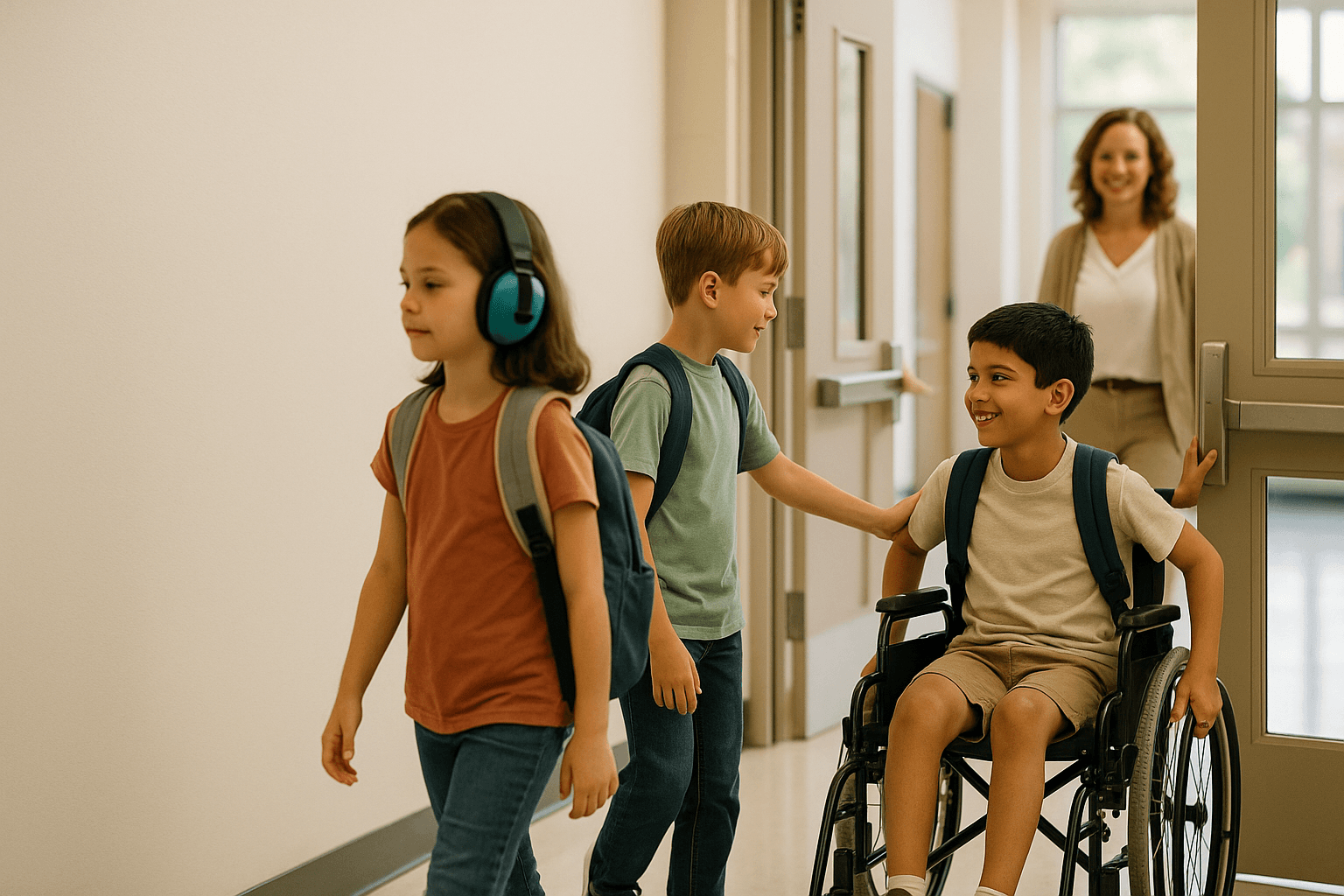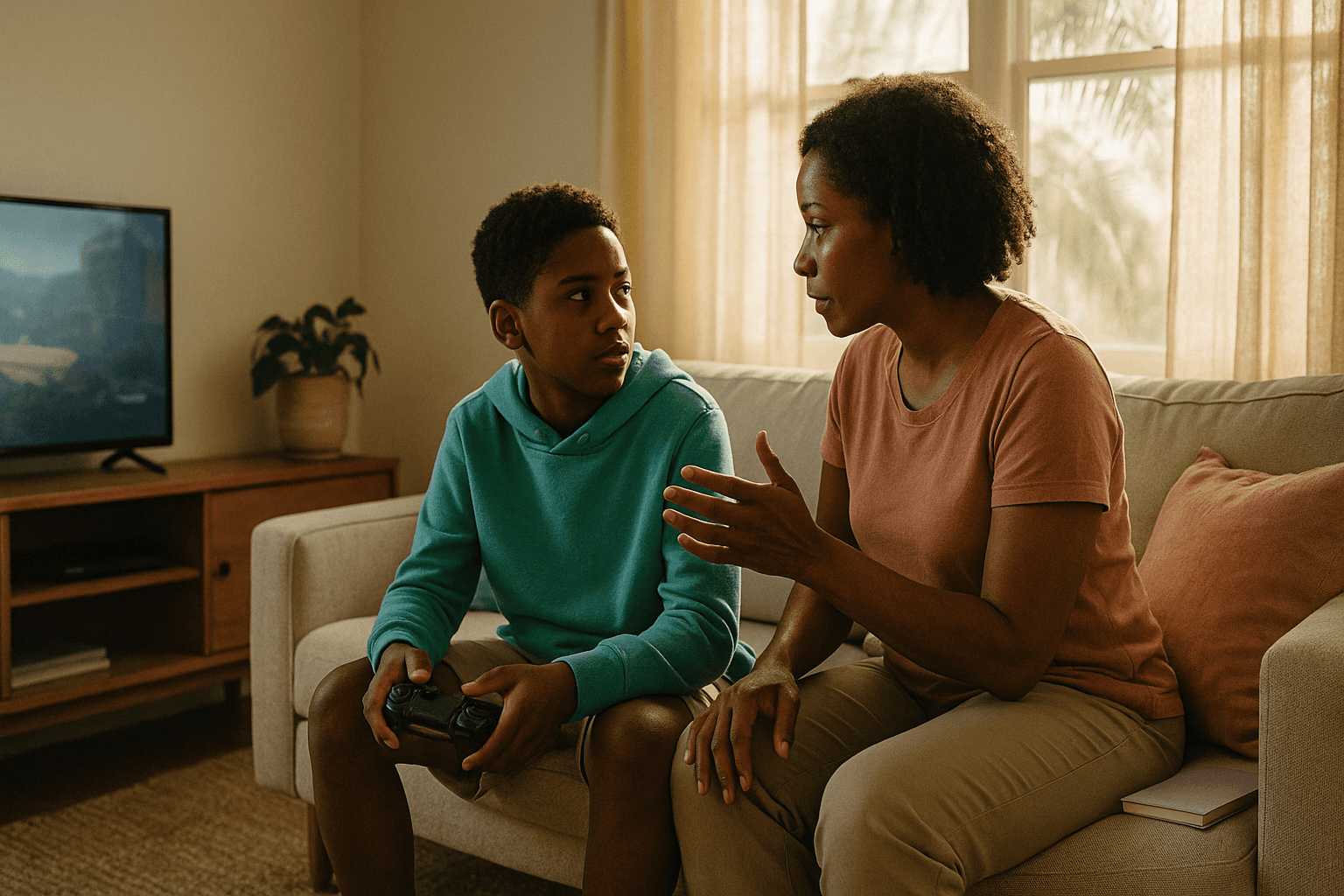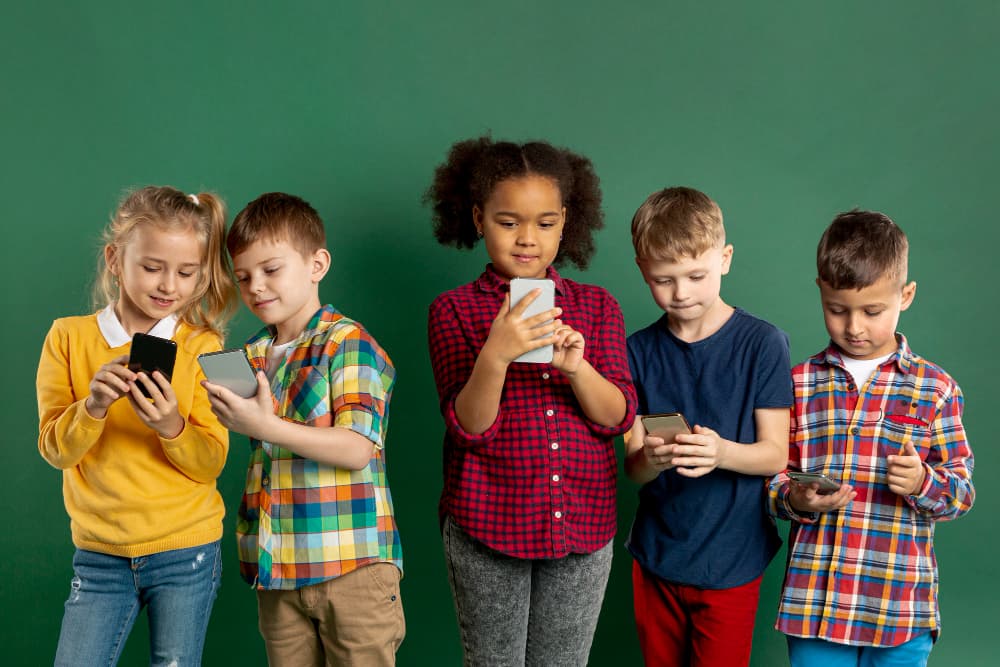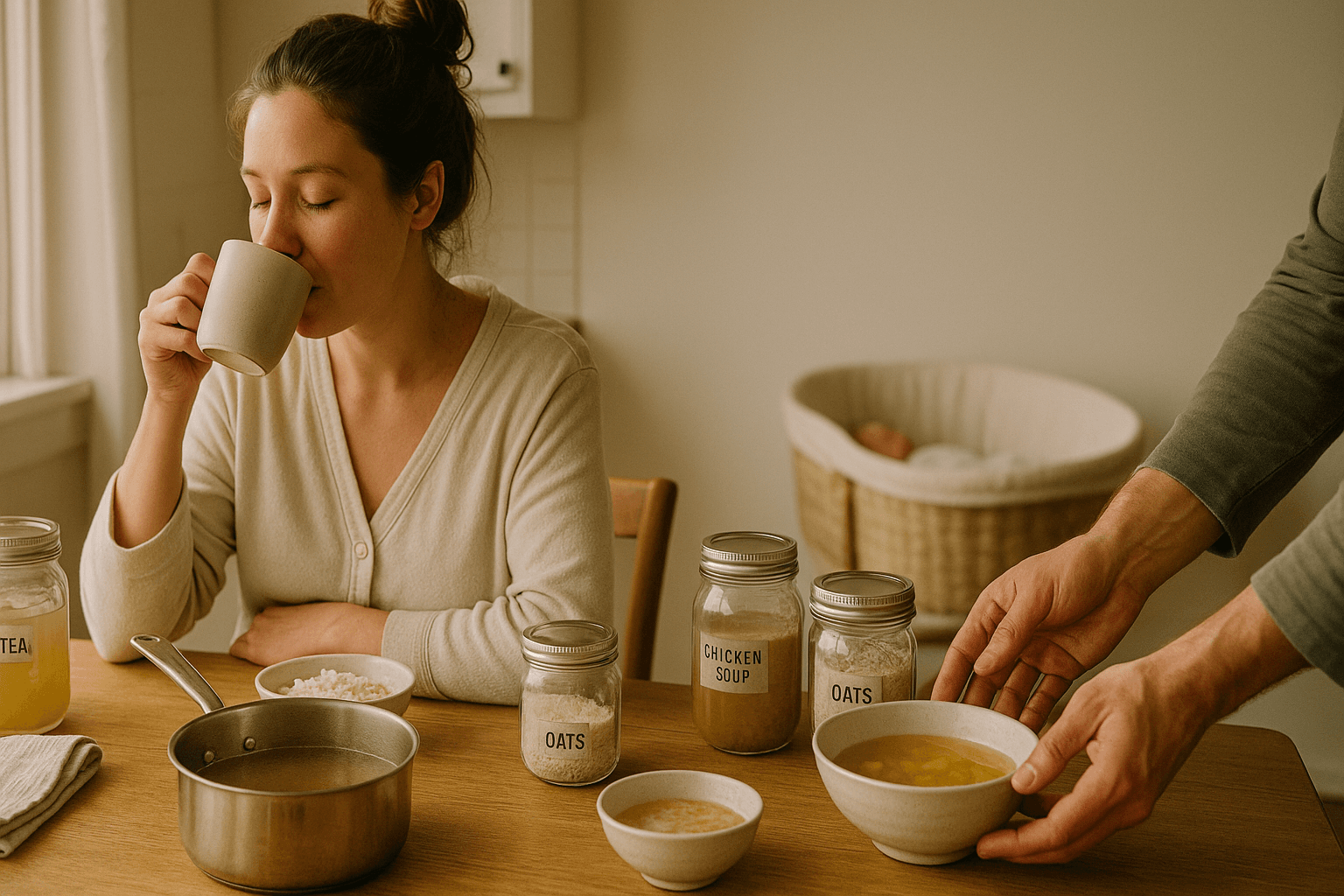Why Our Kids Need to See the World as It Really Is: Teaching Inclusion in an Everyday World
Because the playground is where empathy begins, and understanding starts with honest conversations.
"Why does that kid look different?"
"Will I have friends who are like me at my new school?"
"What if other kids don't understand me?"
Your four-year-old points and asks loudly, "Why does that kid look different?" Your stomach drops. Every parent in earshot turns. You want to disappear into the mulch beneath the swing set. But here's the thing—this moment? It's not a parenting fail. It's actually a golden opportunity.
Children are naturally curious. They notice differences because they're trying to make sense of their world. The question isn't whether they'll encounter kids who communicate differently, learn differently, or have different abilities—it's how we'll help them recognize the incredible strengths that come with human diversity.
Because here's what we know: when we teach our children to see and value each person as a whole individual, we're not just raising more empathetic kids. We're building a world where every child—including our own—can belong authentically.
The Real Talk About Differences
Let's be honest about something: diversity isn't just a nice idea or a feel-good concept. It's reality. Your child will go to school with kids who learn differently, communicate in their own ways, face various challenges, and have different life experiences.
As we approach back to school season, this becomes especially important. New classrooms, new teachers, and new classmates mean fresh opportunities for our children to practice inclusion and build meaningful relationships across differences.
So the question becomes: do we want our children to approach these relationships with fear, awkwardness, and misunderstanding? Or with natural curiosity, respect, and the confidence to see others as complete people with their own stories?
The choice is ours. And it starts with how we frame differences—not as problems to solve or special gifts to celebrate, but as part of what makes us human.
When Your Child Notices: Understanding Different Ways of Being
Picture this: you're at the grocery store and your child sees another child with Down syndrome. Maybe they stare. Maybe they whisper a question. Maybe they wonder why that kid looks different.
First, breathe. This is normal curiosity, not cruelty.
Here's your chance to help your child understand that people are different in many ways, and that's completely normal. People with Down syndrome may learn differently and have some unique physical characteristics, but they're also individuals with their own personalities, interests, and feelings.
Try saying: "Everyone's brain and body work a little differently. That child has Down syndrome, which means they might learn some things in their own way and at their own pace. They have feelings, like to have fun, and want friends just like you do."
Then, help your child connect: Look for shared interests or activities. Do they both like the same playground equipment? Are they both wearing sneakers with fun designs? Finding common ground helps children see similarities alongside differences.
Most importantly: Let your child see you interacting naturally and respectfully with people with Down syndrome—not with exaggerated kindness, but with genuine normal interaction.
Understanding Autism: When Communication and Learning Look Different
A classmate with autism might not make eye contact, could have intense focus on specific topics, or might process social situations differently. Your child might notice that this classmate has very specific interests, responds differently to certain environments, or approaches interactions in their own way.
This is an opportunity to help your child understand that there are many different ways to think and communicate.
Here's how to frame it: "That classmate has autism, which means their brain processes information differently than yours does. They might be really interested in specific topics, need quiet spaces sometimes, or prefer to communicate in their own way. They still want to connect with others, just maybe differently than you're used to."
Acknowledge both strengths and challenges: Some children with autism have remarkable attention to detail, strong memories, or deep expertise in their interests. Others might find social situations challenging or need extra time to process information. Both aspects are part of who they are.
Encourage patience and understanding: Help your child learn that friendship might look different with someone who has autism, but it can be just as meaningful. Maybe they connect through shared activities rather than lots of conversation, or maybe they need to approach social interactions more slowly.
Focus on genuine connection: Show your child how to appreciate their classmate's unique perspective while being patient with differences in communication style.
Understanding Medical Differences: When Bodies Work Differently
Your child might see a classmate with a feeding tube, wheelchair, or hearing aids and wonder about these devices. This is your chance to help them understand with empathy and respect.
Keep it simple and honest: "Some children need feeding tubes to stay healthy and strong. This is simply part of how their body works. That child might have some different experiences - maybe they eat differently or have medical appointments - but they're still a kid who loves the same games, has the same dreams, and wants the same things all kids want: fun, friendship, and to feel like they belong."
Focus on the whole child: A child with a feeding tube might be the fastest runner in class, the best artist, or the funniest storyteller. The medical equipment is just one part of who they are—not the most important part.
Normalize without minimizing: Help your child understand that some people need different tools to help their bodies work well, just like some people need glasses to see clearly. It's part of human diversity.
Encourage natural inclusion: Show your child that a classmate with medical equipment can still participate in most activities, share jokes, and be a great friend. Sometimes there might be adjustments, and that's okay too.
Building Everyday Understanding: The Small Moments Matter
True inclusion isn't just about big conversations—it's built by treating everyone with natural respect and kindness. This back to school season is the perfect time to establish these values and practices in your family. Here's how to weave this into your family's daily life:
Read diverse books: Choose stories where characters with disabilities are portrayed as complete people with their own stories, challenges, and joys—not just as inspiration or teaching tools.
Use respectful language: Pay attention to how you talk about differences. Avoid phrases like "suffers from" or "confined to a wheelchair." When it comes to language preferences, different families and communities may prefer different approaches—some prefer "person with autism" while others prefer "autistic person." Both are acceptable when used respectfully. The key is listening to how people describe themselves and following their lead.
Model natural interaction: Show your child how to interact with people with disabilities the same way you would with anyone else—with genuine interest, respect, and normal social courtesy.
Acknowledge different experiences: Help your child understand that some people have different daily experiences due to their disabilities, and that's simply part of human diversity.
Encourage genuine curiosity: Teach your child that it's okay to be curious about differences, but also important to be respectful about when and how they ask questions.
When Your Child Has Differences
Maybe you're reading this because your child is the one who's different. Maybe they have autism, Down syndrome, use medical equipment, or have another disability. As you prepare for back to school, you worry about whether others will see their whole person or just focus on their challenges.
Here's what you need to know: your child deserves to be seen, understood, and included for who they are—completely and authentically.
Focus on your child as a whole person: When introducing your child or talking about their differences, remember they are so much more than their diagnosis. "This is Alex, who loves space and knows all the planets" gives others a fuller picture than leading with medical information.
Find your community: Connect with other families who have similar experiences. Your child needs to see others like them living full, valued lives.
Advocate with confidence: You know your child best. Trust your instincts about what they need to thrive and feel included.
Build their self-understanding: Help your child understand their own strengths and challenges in age-appropriate ways, so they can advocate for themselves as they grow.
The Truth About Real Inclusion
Here's something we don't talk about enough: real inclusion isn't about everyone being the same or even everyone getting along perfectly all the time. It's about building communities where everyone can belong authentically, where differences are acknowledged honestly, and where people are valued for who they are—not just what they can contribute.
Sometimes this means your child will learn to be patient with someone who communicates differently. Sometimes they'll discover new ways to play or learn. Sometimes they'll see that everyone—including themselves—has things they're good at and things they find challenging.
This isn't always comfortable—growth rarely is. But it's always worth it because it builds a more honest, kinder world for everyone.
Starting Where You Are: Making This Back to School Season Different
You don't need to become an expert on every type of difference overnight. You just need to start with the fundamental belief that every person has value and deserves respect.
As families across Tampa Bay prepare for back to school, this is our chance to set the tone for a more inclusive year. Whether you're shopping for supplies, talking about new teachers, or discussing classroom expectations, weave in conversations about kindness, respect, and celebrating what makes each person unique.
The next time your child asks why someone is different, take a breath and remember: this is your chance to help them see others as complete people with their own stories, interests, and feelings. This is your opportunity to raise a child who treats others with natural kindness, who doesn't stare or whisper, and who can build genuine friendships across differences.
Because at the end of the day, teaching true inclusion isn't just about making other children feel welcome—it's about raising our own children to be the kind of people who create communities where everyone can belong. The kind of people who see past differences to connect with the person underneath.
And in a world that can sometimes feel divided, that's exactly the kind of people we need them to be.
Want More Support on Your Parenting Journey?
This back to school season, you don't have to navigate these important conversations alone.
- Explore our Blog for more honest stories from local parents
- Browse our Directory for therapists and family services
- Join our Community to connect with other parents navigating life without a village
Remember, you're not alone in this journey. We're building this village together, one connection at a time.
Disclosure: The information provided in this article is for educational purposes only and does not replace professional medical or psychological advice. Always consult with qualified healthcare providers for concerns about your child's development.



